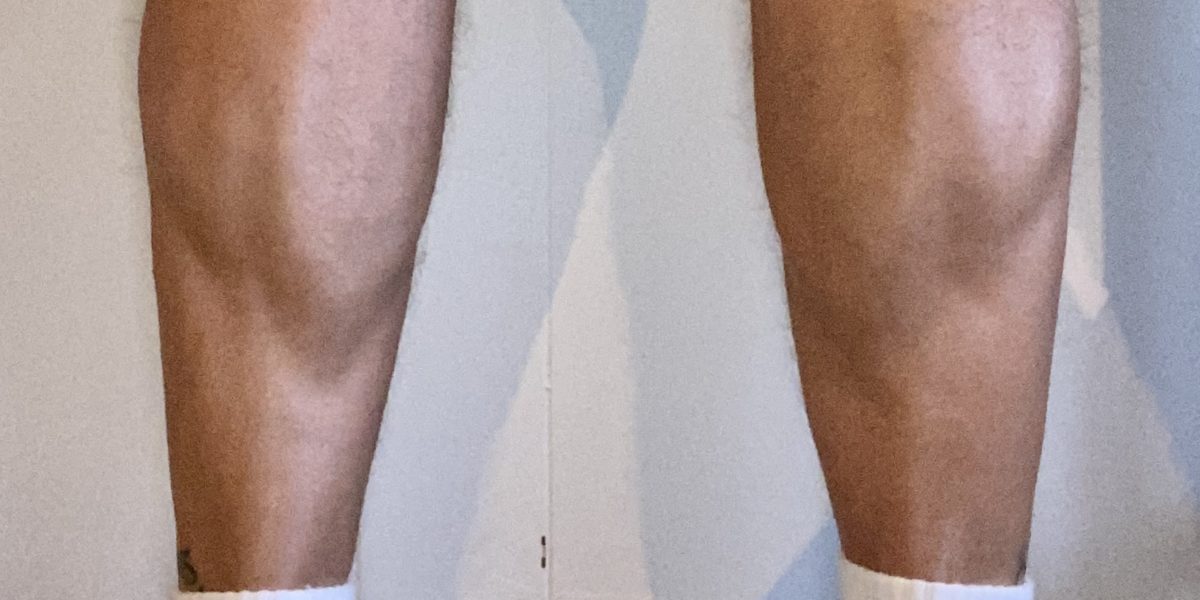We are fast approaching the business end of the Melbourne Half Ironman Training Program. Now is a good time to take a look at how bringing new people into the sport of triathlon and pushing established athletes to improve, can lead to the age old issue of calf tightness. The ultimate goal is to develop a graded program and manage individual fatigue levels to avoid calf tightness, but when you are pushing boundaries, it’s sometimes a case of managing the tightness to avoid an injury. This is easily done with careful planning, continual revision and good communication between athlete and coach.
Anyone who takes up running, or returns after extended periods of time off running, will know that the first thing that tightens up, slows you down or stops you in your tracks is the calf muscle. There are many and varied reasons you might feel pain or soreness in the calf, and the first rule of any injury is IF IT HURTS, STOP. The second rule is, if it continues to hurt, go and see a physio to solve the cause of the injury.
Generally, the main reason for calf soreness is that your calves are becoming fatigued, and once you exceed the level of endurance of any muscle, it’s going to become tight and sore.
When returning to, or taking up running, you are adding extra stress to the calves that they are not accustomed to. This can happen when you increase duration or introduce speed or hills to your training regime. It can also be a symptom of, or compounded by, your footwear. As shoes start to age they stop providing the required support, so regular replacement is critical. You may also have weak calves and need to address the overall strength and endurance level of the calf muscle and the surrounding stabiliser muscles.
Reducing the Risk of Developing Calf Soreness
To reduce your risk of calf tightness or soreness you need to develop a plan with your coach as to how to approach your run training. If you have a history of calf injuries, or you are very new to running, this may include several weeks of run/walk sessions (duration and increase in times are specific to every individual and should be planned out with a qualified coach or sports therapist).
If you are generally fit and just lack consistent training, then you can start running at your usual durations, and slowly add time and intensity over several weeks.
To build muscular endurance and help reduce your risk of calf complications, you can also include calf raises into your strength training program as advised by your coach. This might include single leg raises until fatigue followed by rest for 1min,repeated for 2 – 3 sets on each leg. Any strength style work should be done on days you do not run and fit into any other training schedule you might be following.
Managing Calf Soreness
Once calf tightness or soreness is present, to reduce your chance of developing a soft tissue injury, you should rest, massage and ensure you have the correct footwear.
Athletes don’t like resting and missing sessions, but sometimes it’s better to miss one session and let the tightness settle down rather than try and train through it and give yourself an injury that will see you miss weeks of training. Be sensible and talk to your coach before every session to alter the intensity or style of session if you have any tightness.
Having a regular massage is an excellent way to make sure you stay on top of any niggles to stop them from developing into injuries that will keep you sidelined for weeks. Outside of this, you should use your foam roller or massage stick to release tight calf muscles after every session.
Back on Track
Overall, calf tightness is the result of doing too much too soon – even if you are fit and have been training for years. Any change in your run training program may cause calf issues to develop. Rest, communication with your coach and developing a plan are the key elements to successfully increasing intensity and duration with minimal adverse affects.
If at any time you develop symptoms such as severe pain, swelling, numbness or pins and needles then tell your coach immediately and consult a sports therapist or health care professional.

